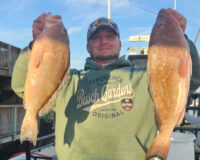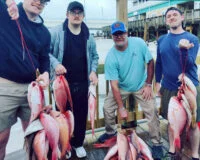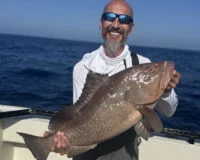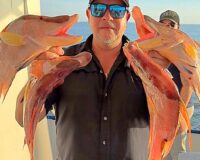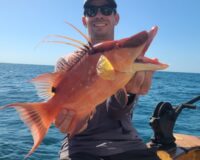Inshore Fishing Report
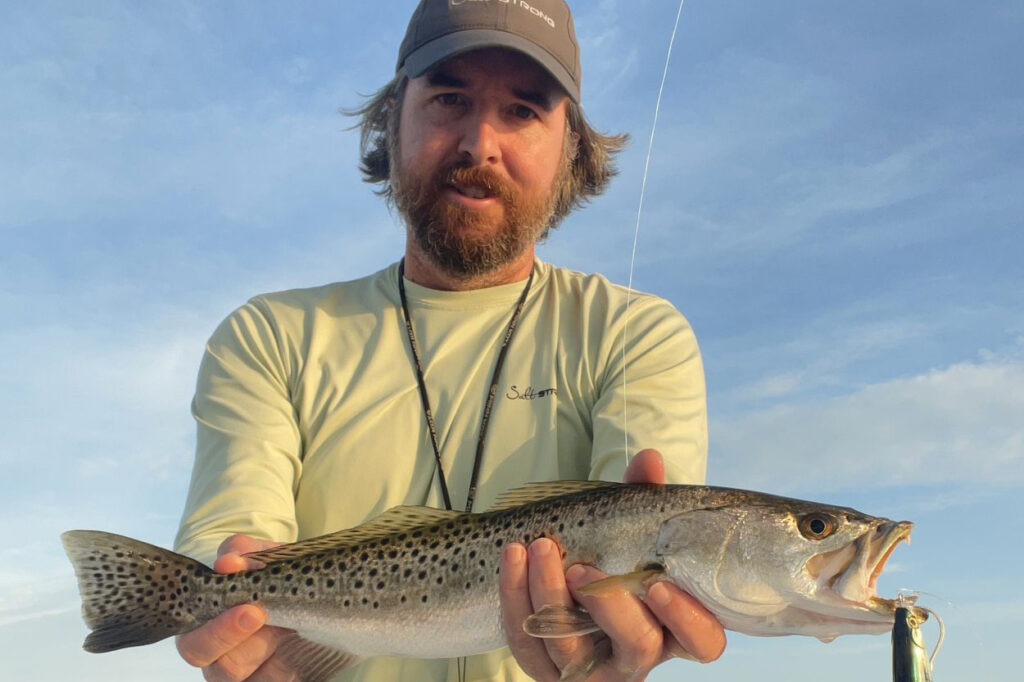
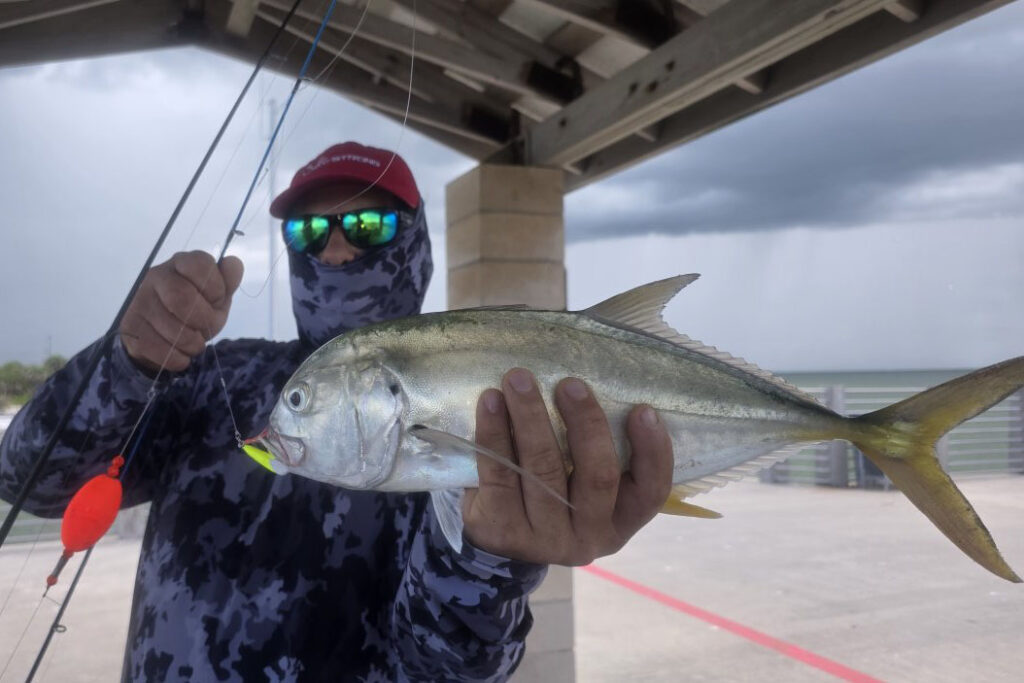
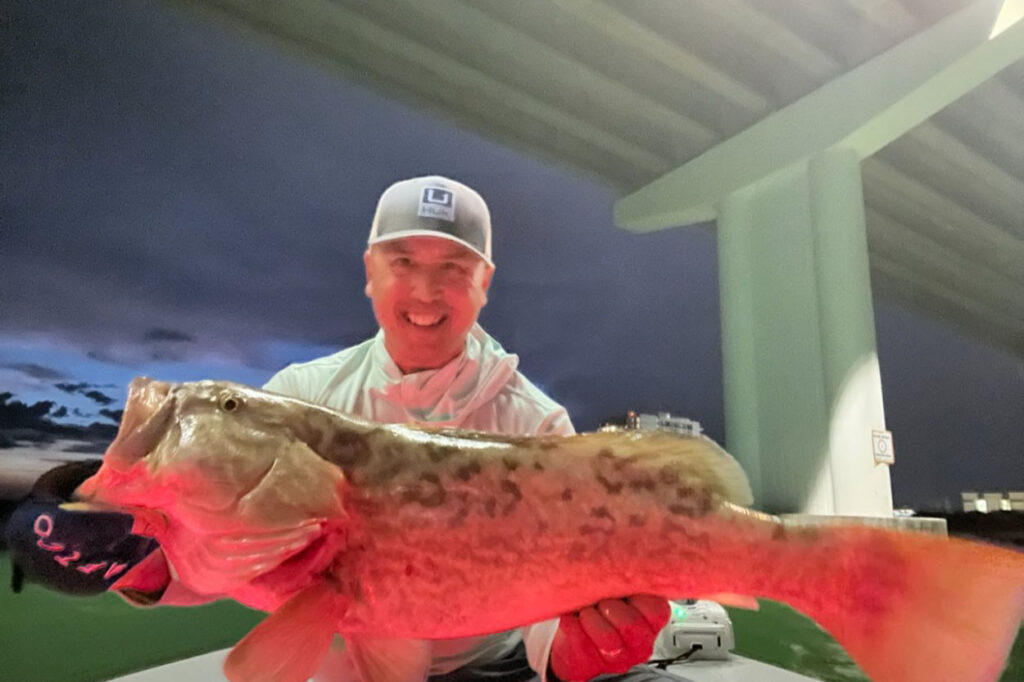
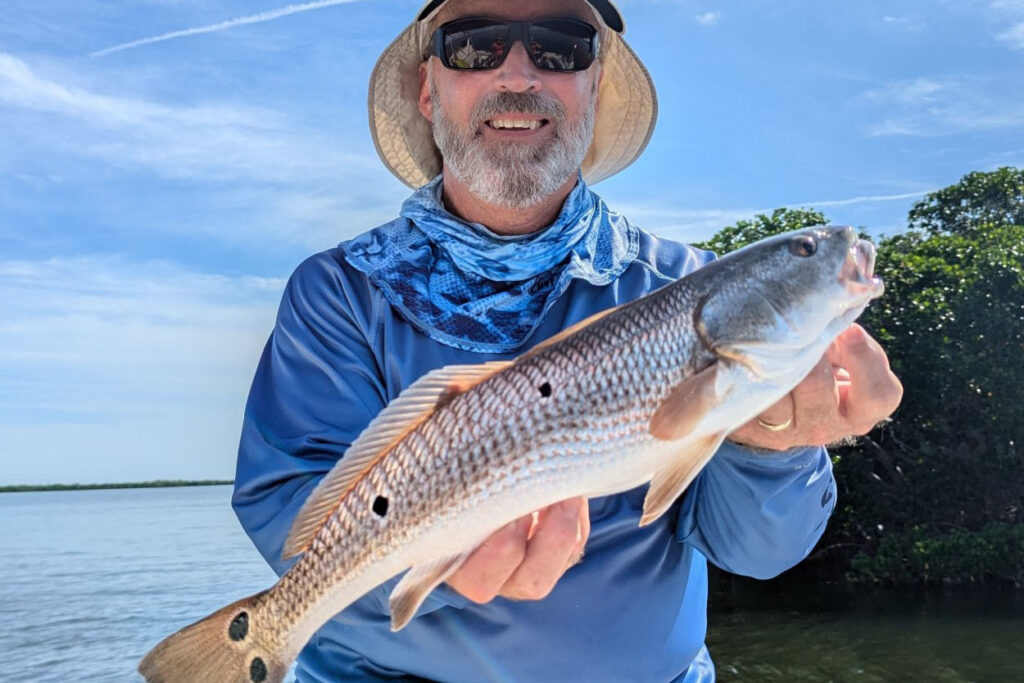
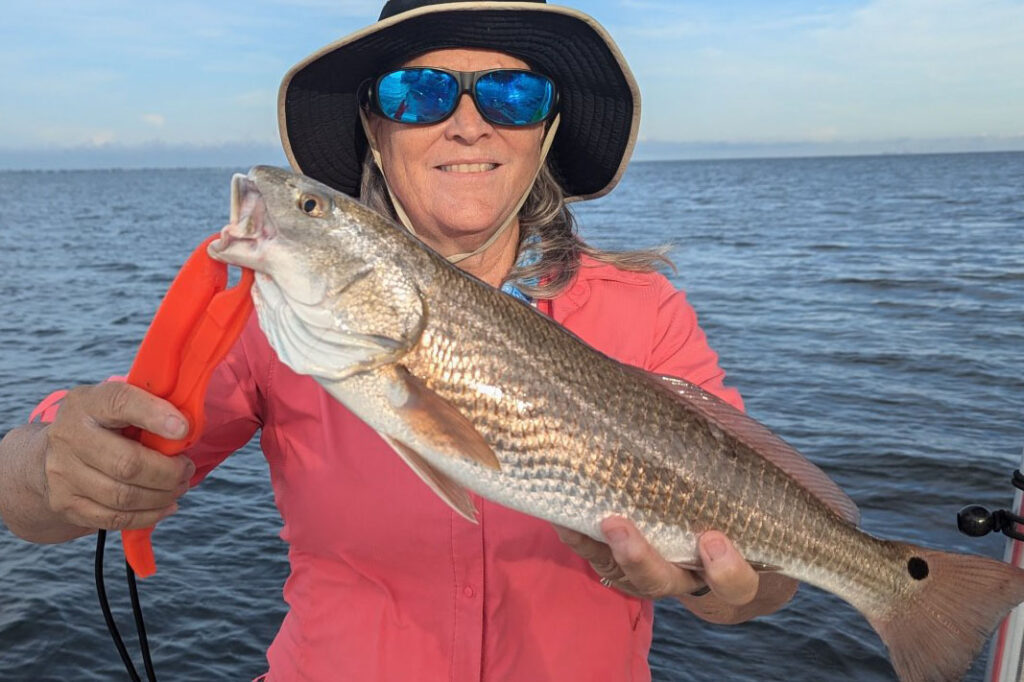
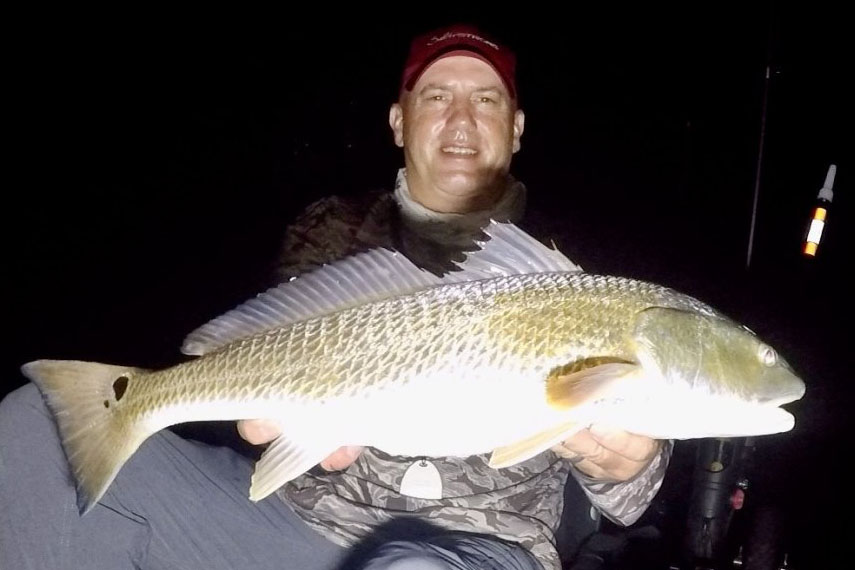
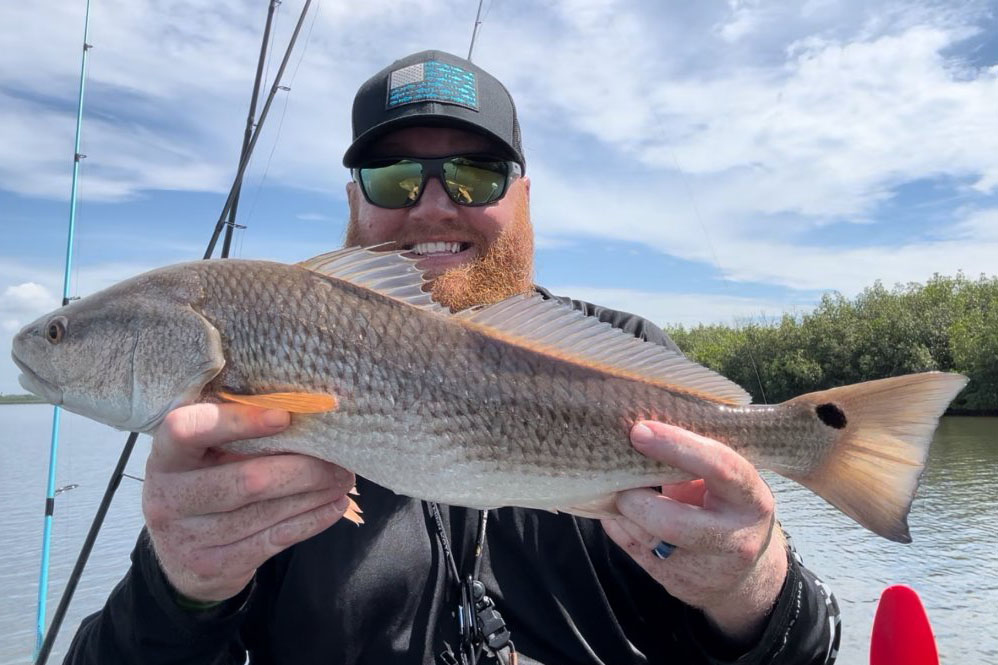
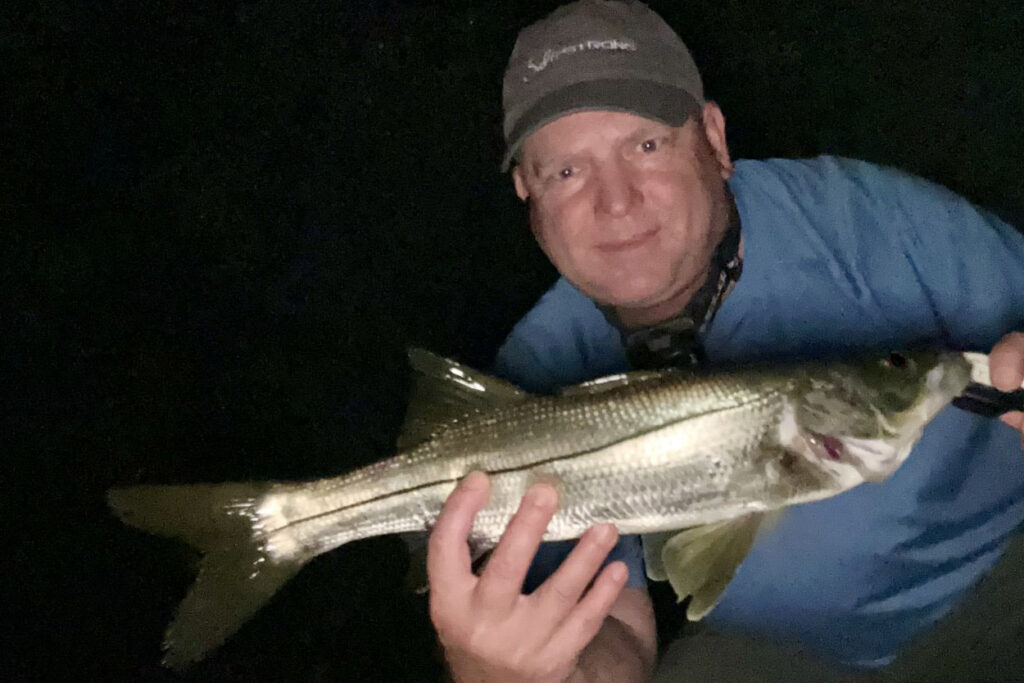
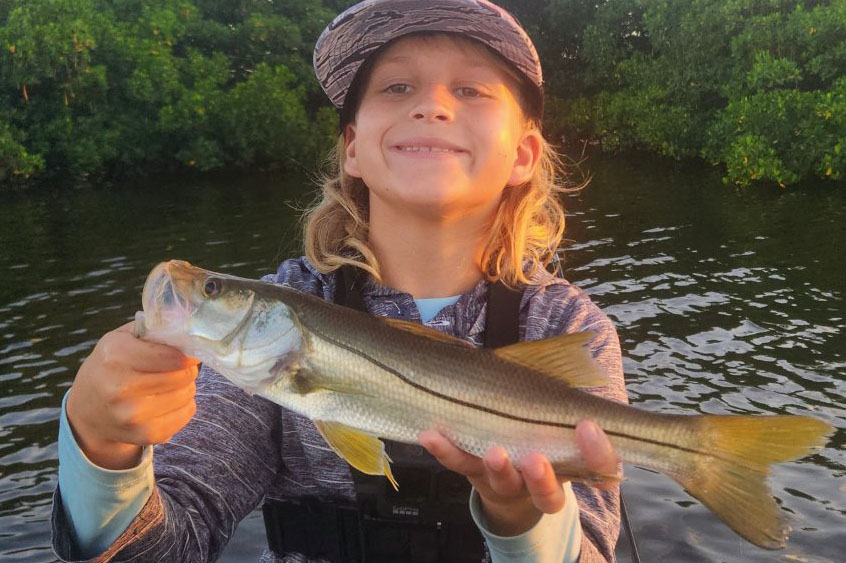
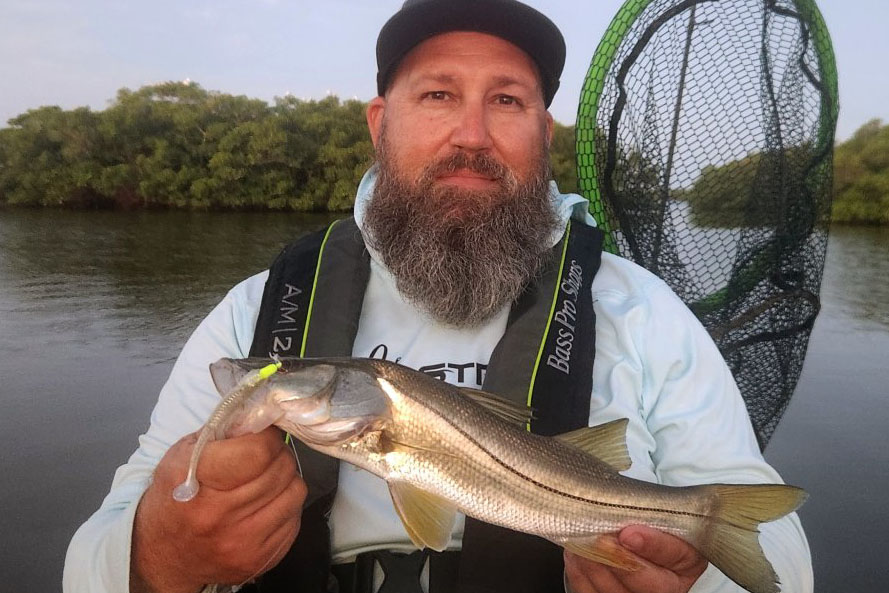
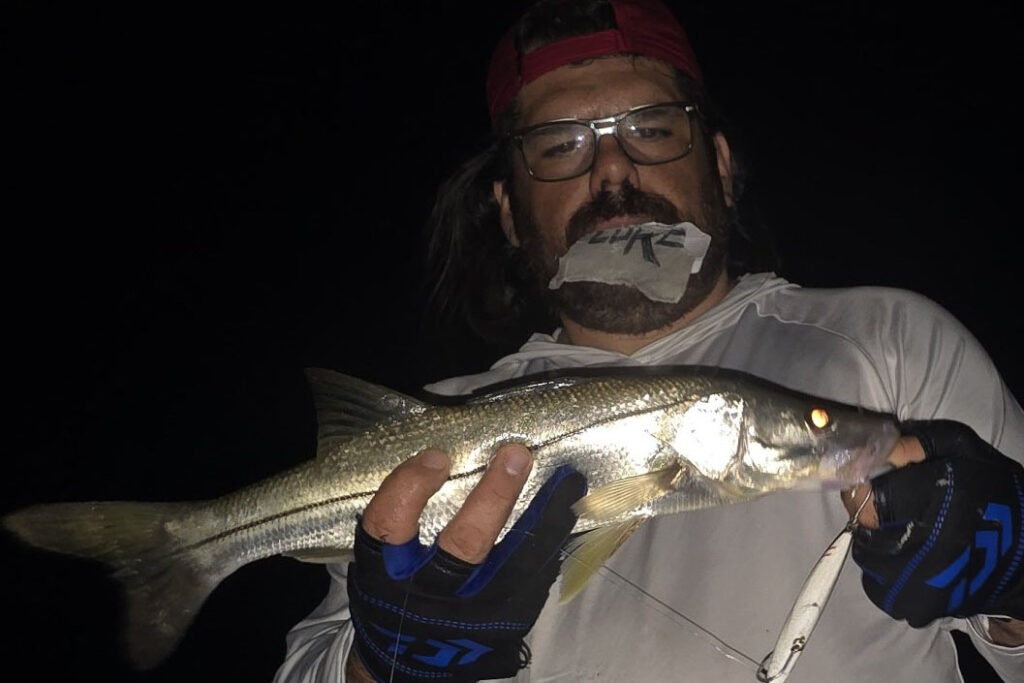
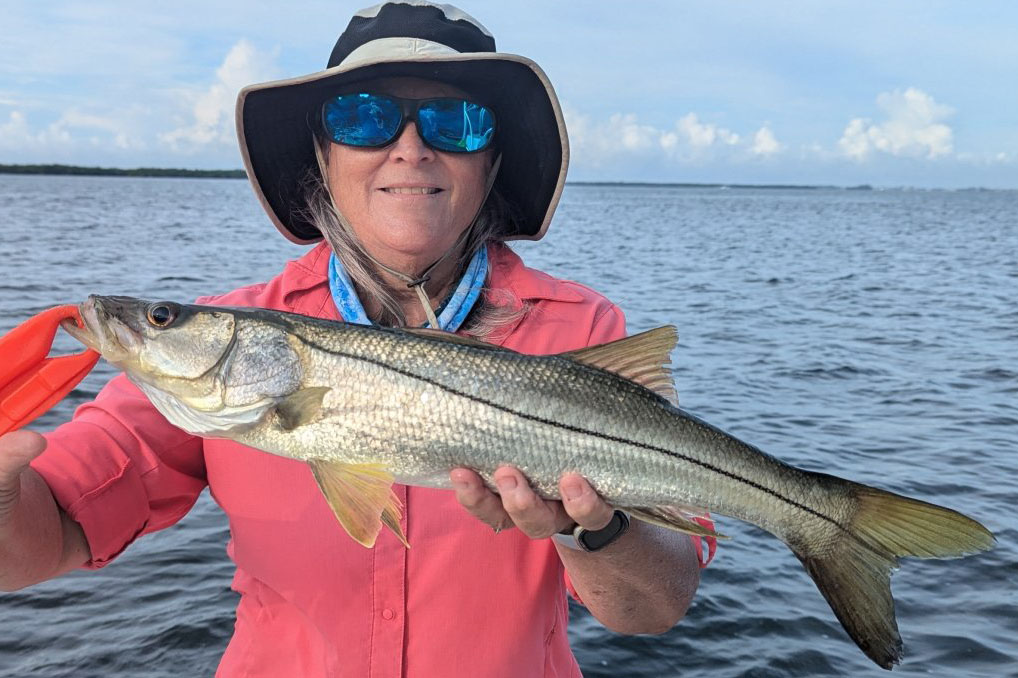
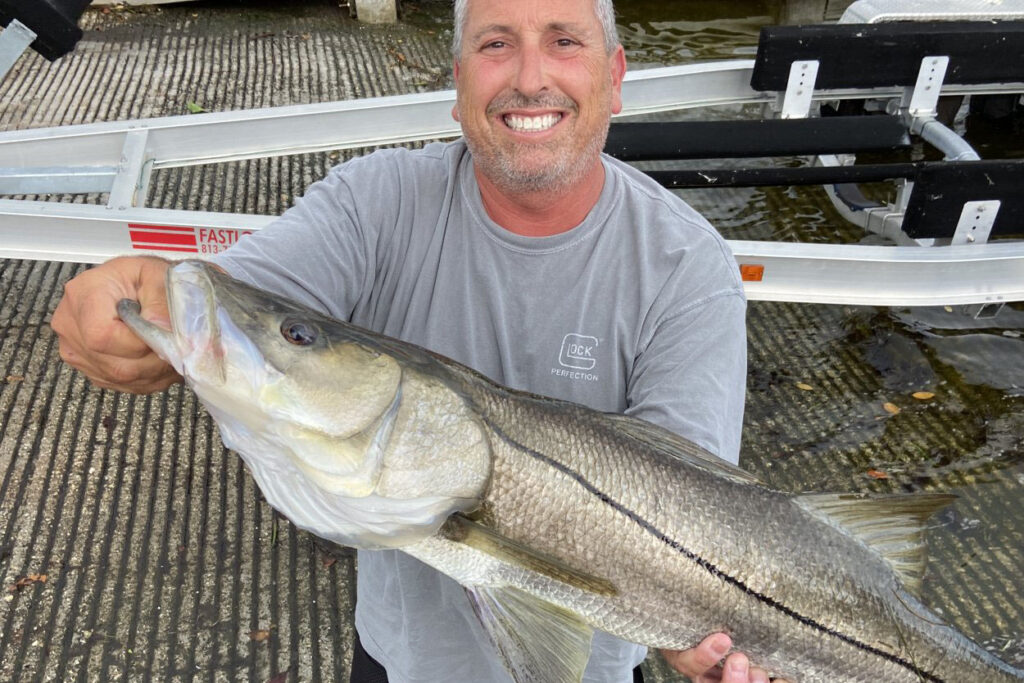
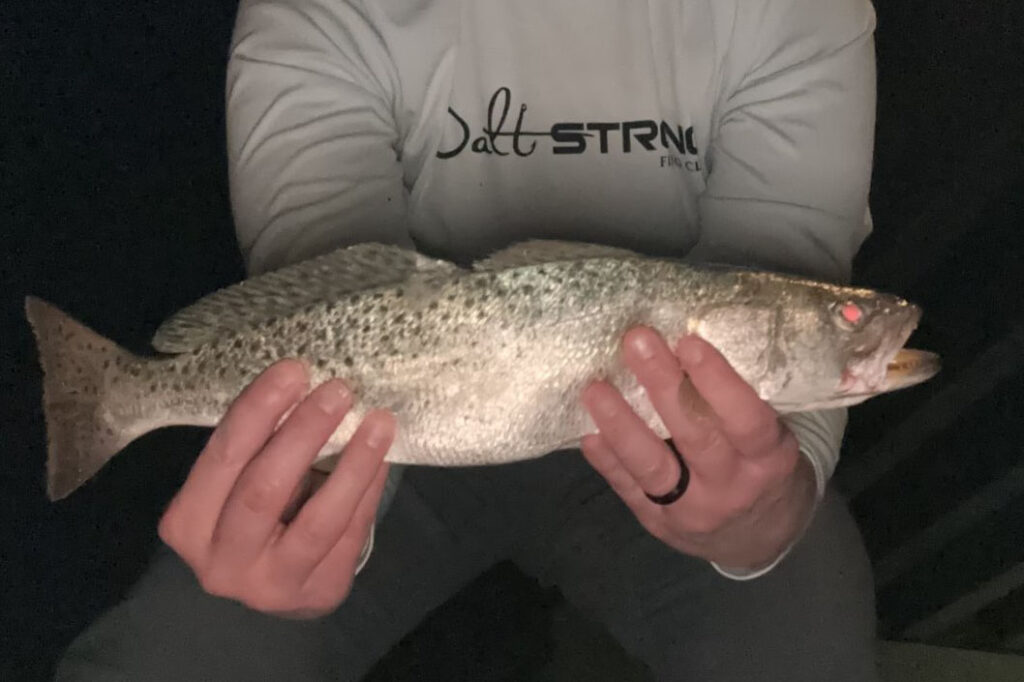
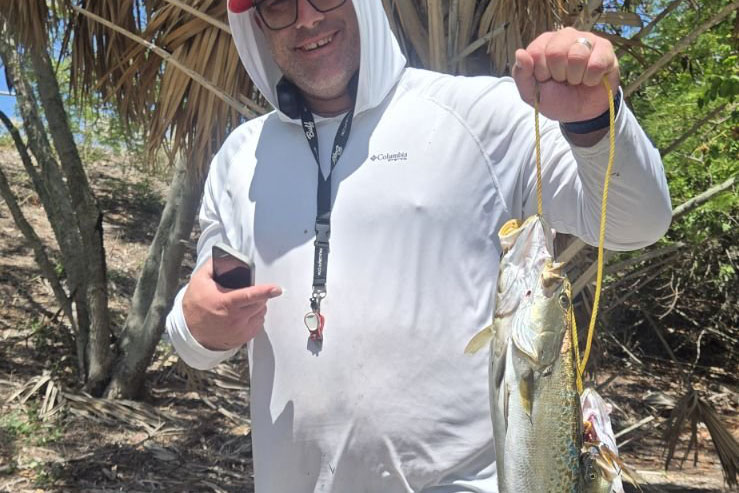
Snook should be ready to bite if you can catch the right tide at the right time. Fishing the passes early in the morning has been the best strategy lately. They’re more active during this time before the heat of the day sets in.
Redfish are currently hanging out in the upper and back bays, particularly around flats, oyster bars, and mangrove shorelines. They’re responding well to cut dead bait, which has been highly effective in these areas.
Trout action is present, especially if you can find pockets of cleaner or clearer water amidst the murky conditions. Targeting deeper flats and channels might yield better results.
Mangrove snapper are sticking close to structures and seem less bothered by the murky and dirty water. They remain aggressive and are biting well on light tackle with small baits.
Shark fishing remains hot inshore, with plenty of action to be had, especially in areas with moving water where sharks are actively feeding.
Black drum are particularly active around the bridges, providing consistent action. They’re biting well on live shrimp or crabs, and their numbers seem strong despite the recent weather.
Fishing Tips
- Snook: Use live baits like greenbacks, threadfins, and shrimp, or try flair hawks and soft plastics at night.
- Redfish: Look for them around mangroves, oyster bars, and flats, and use dead baits during higher tides.
- Trout: Target them with soft plastics, white bait, and shrimp around deeper flats and potholes.
- Tarpon: Target them during the full moon with crab flushes, making it an ideal time to target them.
- Flounder: Find them near sandy bottoms and structures, biting on bottom baits.
- Pompano: Be prepared to move frequently to stay on their bite.
- Sharks: Use big dead baits in areas with moving water.
Help spread the word about what to do if you hook or entangle a bird. Never cut the line; instead, reel in the bird carefully to dehook and release it. If you accidentally hook a dock, break the line at the hook to avoid leaving any line in the water. Seabirds with fishing lines hanging from them are becoming more common, and this could lead to the closure of fishing areas.
Rising concerns about bird entanglements might result in closing fishing spots, impacting the few available locations around Tampa Bay from shorelines, docks, bridges, or piers. Learn more in our recent podcast with Salt Strong: https://www.saltstrong.com/articles/shutting-down-fishing-at-busy-pier/.
Nearshore Fishing Report
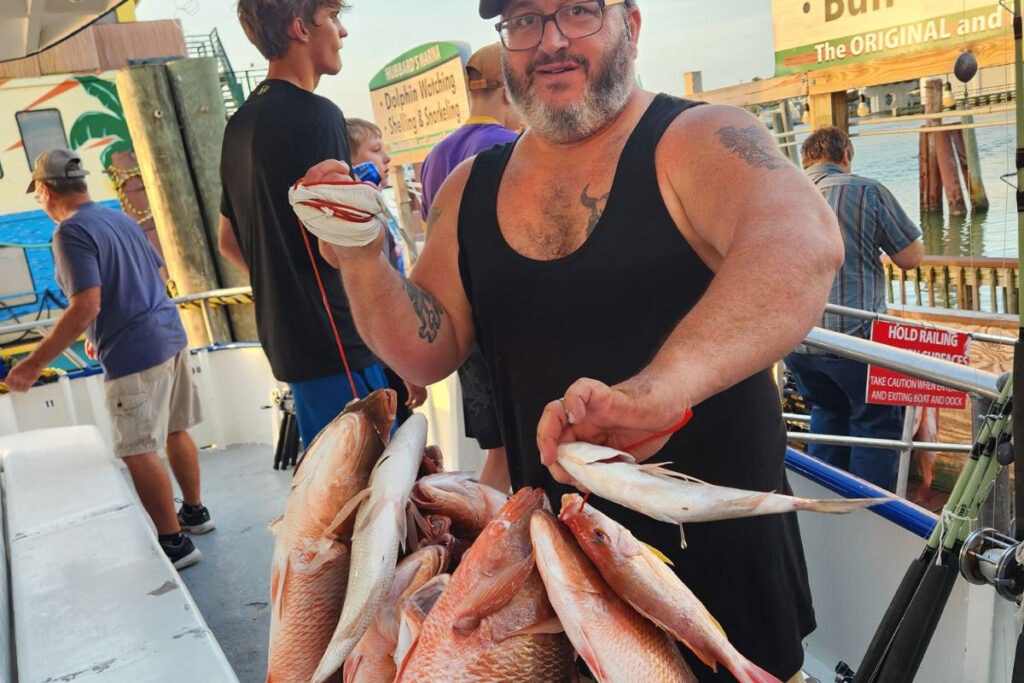
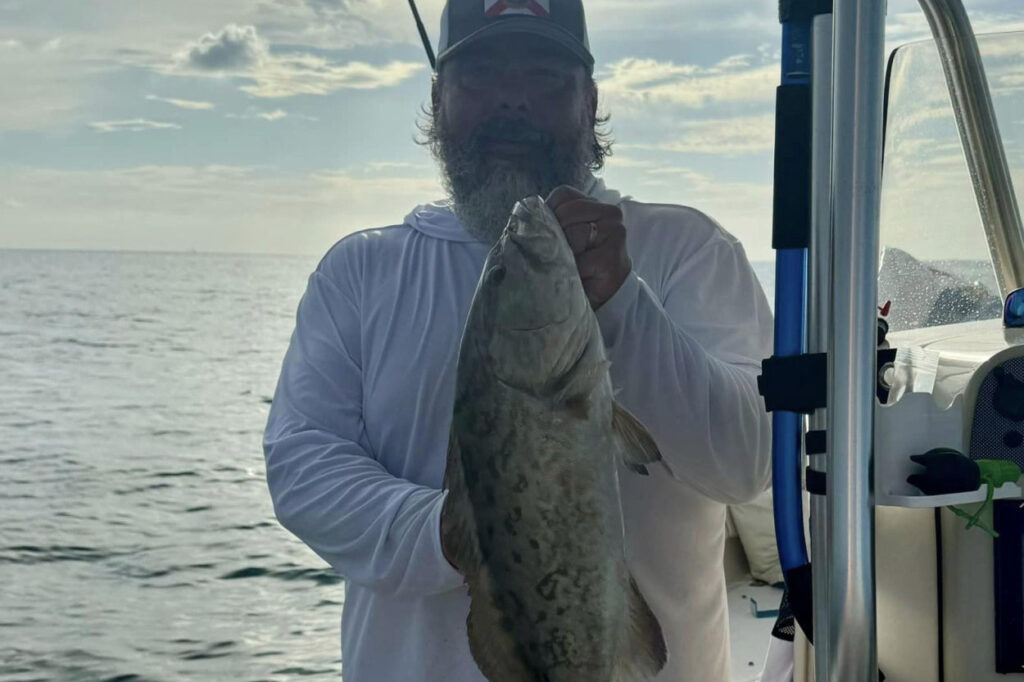
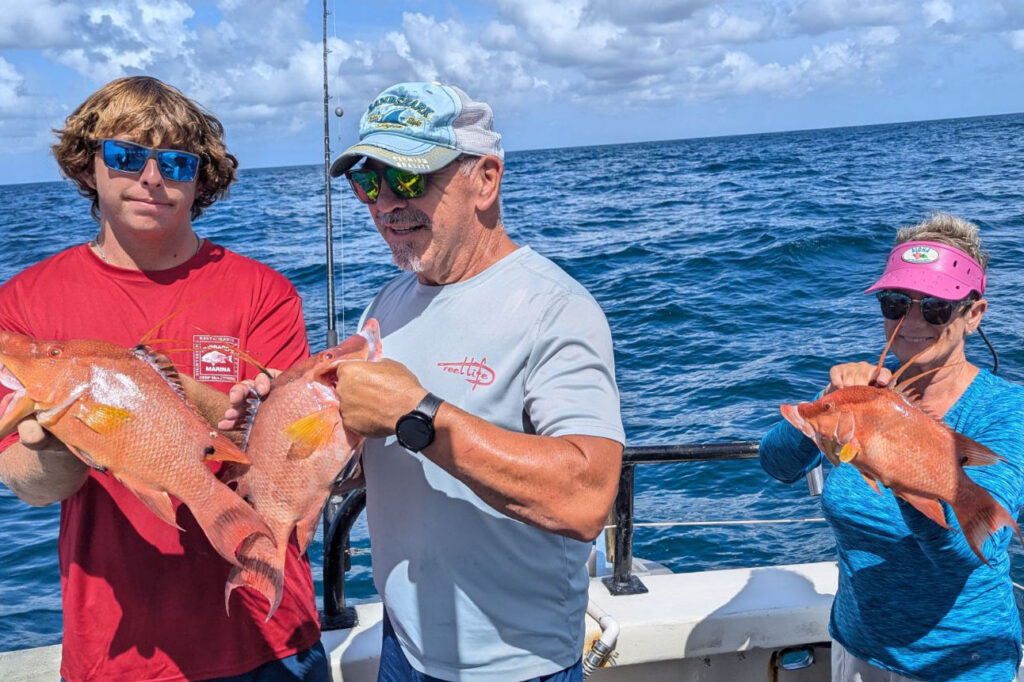
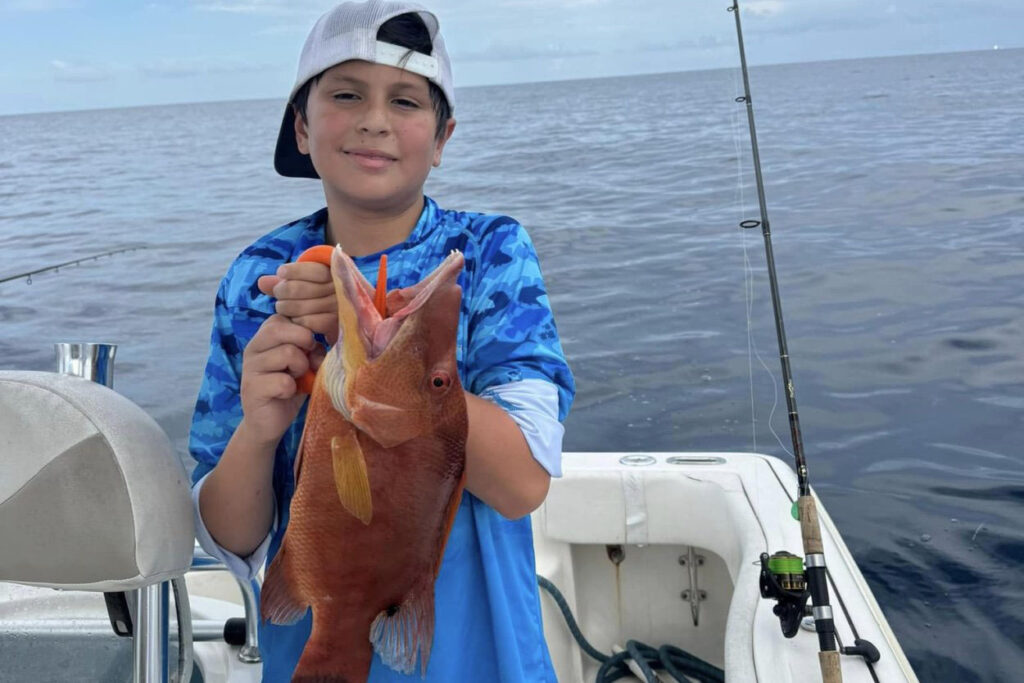
Near shore waters continue to produce good numbers of mangrove and lane snapper. These species are feeding well despite the murky water, especially in deeper areas where visibility is slightly better.
Both species are super active near shore, offering plenty of opportunities for anglers. They’re responding well to cut bait and live offerings, particularly around structure and ledges. live shrimp is normally a good option, but with the more murky conditions the cut dead bait is a better option. Small chunks of cut threadfin and the double snell rig would be a great idea.
Fishing Tips
- Red Grouper: Target the deepest near shore waters with big dead baits or solid live baits. Use 60 lb test and 7/0 hooks for best results.
- Red Snapper: Use big dead baits like whole squid and bonita strips with heavy tackle to focus on larger fish. Prime trips include the 12-hour extreme, 39-hour, and 44-hour trips.
- Scamp Grouper: Use small to medium pinfish and cut threadfin, especially while targeting mangrove snapper.
- Mangrove Snapper: Near shore, use live shrimp and small chunks of threadfin on 30-40 lb test with 3-4/0 hooks. Offshore, use bigger chunks of cut threadfin or medium pinfish on 40-60 lb test with 5-7/0 hooks.
- Vermillion Snapper: Start around 100 feet of water using cut squid or threadfin. These fish are aggressive and not leader-shy.
- Yellowtail Snapper: Use shrimp, cut squid, and threadfin.
- Pelagic Species: Keep flat lines and pitch rods ready for sailfish, kingfish, wahoo, tuna, and mahi mahi.
Offshore Fishing Report
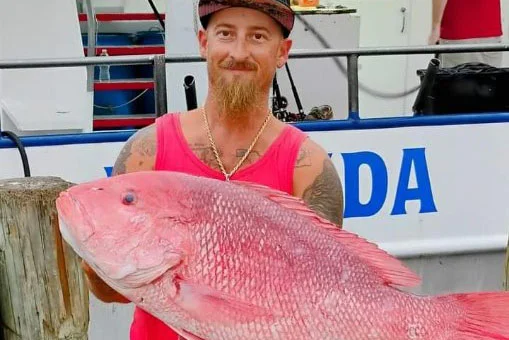
The red snapper bite offshore remains incredibly hot, with the season running until the end of day on August 27th. These fish are eager to bite, making it a prime time to target them on longer trips like the extreme trip, 39 hour or the 44 hour. Plus, we have tons of room the rest of season on all these trips!
Triggerfish season is now open, and the bite is going extremely well. These fish are plentiful and make for great eating, adding to the offshore bounty. They like small pieces of cut squid strips or bonita strips.
The scamp grouper bite has been steady, and these are among the best eating fish you can catch offshore. They’re responding well to live bait and cut threadfin in deeper waters. We often catch them while targeting the bigger mangrove snapper.
Mangrove snapper offshore are big and super active. They’re hitting well on larger baits, particularly at night or during the early morning hours. We see them on the cut threadfins and double snell rigs, or the small to medium pinfish.
Yellowtail snapper action has been phenomenal, with fish feeding aggressively on shrimp, cut squid, and threadfin. They’re a colorful and delicious target, making them a favorite among anglers. We are seeing them often around the sundown period when we are able to limit out early on the red snapper we can target these at the close of the long range trips like the 39 or 44 hour trips.
Vermillion snapper are big and biting well offshore. They’re responding to cut squid and threadfin, especially in waters over 100 feet deep.
Both porgies and almaco jacks are super prolific and active offshore, providing plenty of action for anglers targeting bottom species.
Pelagic species are thriving offshore, with lots of mahi mahi being caught recently. There’s also been a good showing of blackfin tuna, cobia, and the occasional sailfish, adding an exciting element to offshore trips.
Seasonal Openings:
- Red grouper: Open until the end of June
- Triggerfish: Open all year except June & July
- Amberjack: Open May, September & October
- Red snapper: Open June 1st – August 27th (close August 28th at 12:01am)
- Gags: Will open September 1st until September 15 (close September 16th at 12:01am)
- All other species: Open all year
Remember that when fishing in deeper nearshore and offshore federal waters, the Descend Act requires you to have a descending device or venting tool “rigged and ready.” If you know how to use a venting tool, keep it prepared. If not, here’s some helpful advice: https://bit.ly/3L5HTnv. Using a descending device is straightforward and doesn’t require as much precision or practice as venting. You can even get over $100 worth of descending device gear for free by taking a short course on barotrauma mitigation, which helps more fish survive. The course only takes about 10-15 minutes, and you can learn valuable techniques to protect our offshore fishery. Spread the word by visiting: https://returnemright.org/.
TERMS OF REFERENCE-
Inshore: This covers the areas from the inner bays, through the bridges, and right up to the beaches.
Near Shore: This includes the coastal waters from the beaches up to twenty miles offshore, or up to a depth of 100 feet.
Offshore: This extends from twenty miles offshore or from a depth of 100 feet and beyond.
For more fishing reports, photos, videos, and other content, check out Hubbard’s Marina on Facebook, Instagram, YouTube, TikTok, Twitter, Pinterest, or Snapchat by searching for @HubbardsMarina. Remember our family motto: “If you’re too busy to go fishing, you’re just too busy!” Thank you for reading our report.
Capt. Dylan Hubbard, Hubbard’s Marina
Phone or text: (727) 393-1947
Website: Hubbard’s Marina

Check out our new shirt! The Hubbard’s Marina mermaid tee. https://shop.hubbardsmarina.com/shop/Apparel/Shirts/p/Mermaid-T-Shirt-Purple-x84256618.htm

